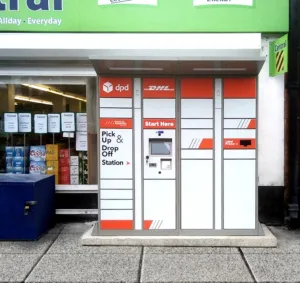Partner Content
By Matt Bailey, Director of Sales, Productsup
There are a lot of channels out there. Selling on all of them doesn’t work for the majority of brands and business models, however. It can be tempting to pour funds into every ecommerce channel possible in order to maximize the possibility that a customer will find your product and make a purchase. But often, it’s not the best way.
Ecommerce channels don’t cater for the same sales and marketing objectives, audience type, or even the same buyer journey stage. And that’s why less can be more when it comes to a multichannel ecommerce strategy. Instead of trying to adopt a one-size-fits-all approach to ecommerce marketing, it’s better to focus your efforts on selected channels that perfectly fit your brand, products, goals, and customer.
I’m referring to multichannel ecommerce throughout this article, because we’re focussing on identifying the ecommerce channels that will help you reach your customers and your sales goals.
The distinction between multichannel and omnichannel ecommerce is as follows:
- Multichannel ecommerce involves brands selling across multiple online and offline channels, such as marketplaces, social channels, retailer websites, and brick-and-mortar stores.
- Omnichannel ecommerce is a multichannel approach that focuses on creating a seamless, consistent customer experience across all of these retail touchpoints.
While multichannel ecommerce focuses on the product content, omnichannel focuses on the customer. But you can’t be truly omnichannel without first implementing a successful multichannel strategy.
Here’s how to get that foundation in place, by finding the right ecommerce channels for your brand:
Which ecommerce channels are really right for your brand’s products?
Here are the questions you’ll want to ask yourself so you can begin to finetune your multichannel strategy:
1. What are your brand’s goals?
The channels you sell and market through will depend on your current objectives. For example, do you want to:
- Attract prospective customers while they search?
- Re-engage previous customers?
- Reach out to totally new audiences?
- Increase traffic quantity and/or quality?
- Do all of the above and more?
Defining your ideal results makes finding the right channels much simpler, because ecommerce channels each have their strengths and the goals they work well for.
While search channels and online marketplaces, like Google Shopping and Amazon, help you capture the lowest hanging fruit by attracting people who are actively searching for products like yours, retargeting channels like Facebook and Criteo targets shoppers that have already visited your app or website.
Social channels like Instagram and Pinterest inspire potential customers, while large retailer websites are a great place to be visible and noticed by shoppers while they browse and search.
2. Who is your target audience?
Every ecommerce channel was not created equal when it comes to audience demographics and targeting options.
Among the social channels, there is something for every brand. While TikTok still has a largely Gen Z and, to a lesser extent, Millennial audience, YouTube is now used across the board by all age groups.
Facebook, too, has a wide-ranging audience. It has 2.8 billion monthly active users and super-flexible targeting options, so you can reach people with specific interests and at certain stages of their lives.
If you’re considering adding a new channel to your sales and marketing mix, be mindful of who uses the channel, and how.
3. Which channels are your competitors using?
Checking out where your competition is will give you a good indication of the right channels for you. Look at the successful ecommerce brands with products that are comparable to yours.
Where do they sell? Where do you see their ads and marketing? What tactics are they using? Use these insights when it comes to finetuning your own multichannel strategy.
4. What is your marketing budget?
If you’re starting out with a lower budget, start out with channels that will enable you to capture the lowest hanging fruits with small investments, like retargeting and search channels.
With higher budgets, you can ramp up your efforts and invest in larger scale advertising and marketing campaigns across social media, as well as offline and online brand building campaigns.
5. What resources and time do you have available?
The ideal channels for you may depend partly on the resources and time you have to invest when creating campaigns and getting on to new channels.
Text ads typically require less resources than display or video ads, but they still need to be optimized for channel, performance, and so on.
With new ecommerce channels and opportunities arising all the time, you’ll want to be agile enough to react fast and shorten your time to market whenever you decide on a new sales or marketing avenue.
Good feed management software can help you manage all of your channels, and optimize your product content without spending excess time and resources on manual tasks, or needing support from IT.
What to do next
Once you’ve streamlined your sales and marketing channels so you’re left with exactly the right ones for your brand, it’s time to:
Get agile enough to test out new channels whenever you need to
Determine the value of channels by testing out the waters. Try listing or advertising a few of your most popular products and bestsellers before sending your entire product inventory. If you get good results, you can prepare your product feeds to fully leverage the channel.
Create seamless, omnichannel experiences
Provide a smooth shopping experience across all of your digital shelves. Tell the same story wherever your customers and prospects find you, to give them more reason to trust you. You can do this by making sure your product data is clean and consistent in the first place, and by ensuring any changes you need to make are made across the board.
Remember: Your product content needs to be complete, accurate, and optimized for every channel. That’s where a feed management solution comes in.










